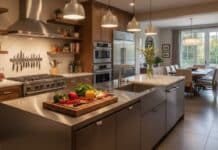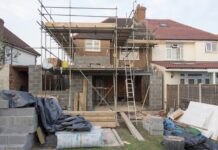Loft conversions represent one of the most cost-effective methods of adding substantial living space and property value, offering opportunities to transform unused roof spaces into functional accommodation that serves various purposes from additional bedrooms to home offices. Understanding how these conversions impact property valuations enables informed decisions about investment viability whilst recognising factors that maximise returns.
The relationship between loft conversion costs and added property value varies significantly based on conversion quality, local market conditions, and compliance with building regulations that affect both immediate functionality and long-term marketability. Professional valuers consider multiple factors when assessing conversion impact, including space quality, planning compliance, and market appeal that influence buyer perceptions and willingness to pay premium prices. Estate Agents in Bristol consistently report that well-executed loft conversions can add 15-20% to property values whilst providing competitive advantages in markets where buyers seek additional accommodation without moving to larger homes.
Types of Loft Conversion and Value Impact
Basic roof light conversions utilise existing roof slopes with windows installed in the roof plane, providing cost-effective additional space whilst maintaining original roof structure. These conversions typically add £15,000-25,000 to property values whilst requiring investment of £8,000-15,000 for professional completion.
Dormer conversions extend roof space through structural additions that create additional headroom and floor space, enabling more functional room layouts that appeal to buyers seeking genuine living accommodation rather than storage areas. Value additions range from £20,000-40,000 depending on size and quality.
Hip-to-gable conversions maximise space in semi-detached or end-terrace properties by extending roof structure across the full width, creating substantial additional accommodation that significantly impacts property values through increased usable floor area.
Mansard conversions provide maximum space increases through comprehensive roof reconstruction, typically adding significant value whilst requiring substantial investment that must be justified through comprehensive cost-benefit analysis considering local market conditions.
Planning Permission and Building Regulation Impact
Permitted development rights enable many loft conversions without planning permission, provided they meet size and design criteria that vary based on property type and location. Compliance with these rules ensures legal conversion whilst avoiding complications that might affect property marketability.
Building regulation approval demonstrates structural safety, insulation standards, and fire safety compliance that protect property value whilst providing buyer confidence about conversion quality and legal compliance. Professional certification adds credibility whilst ensuring insurance validity.
Conservation area restrictions may limit conversion options whilst requiring design approval that respects neighbourhood character. Understanding these constraints enables realistic planning whilst ensuring conversions enhance rather than detract from property appeal.
Listed building consent requirements create additional complexity for period properties where conversions must preserve historic character whilst meeting modern standards. Specialist advice ensures compliance whilst maximising value addition within heritage constraints.
Quality Standards and Market Appeal
Professional construction quality significantly affects value addition with properly insulated, well-finished conversions commanding premium prices whilst amateur work may add little value or even detract from property appeal through poor execution.
Natural light provision through roof windows or dormers creates bright, appealing spaces that justify premium valuations compared to dark, cramped conversions that buyers perceive as poor-quality accommodation unsuitable for regular use.
Headroom adequacy ensures conversions provide comfortable living space with minimum heights meeting building regulations whilst generous dimensions create premium accommodation that commands higher valuations and broader buyer appeal.
Staircase design and integration affects both functionality and property flow with quality staircases maintaining period character whilst providing safe, convenient access that doesn’t compromise existing accommodation quality or appeal.
Functional Use and Market Demand
Bedroom conversions typically provide highest value addition due to strong market demand for additional sleeping accommodation, particularly in family areas where bedroom numbers significantly influence property values and buyer interest.
Home office conversions have gained importance following remote working trends, with dedicated workspace commanding premium valuations from buyers seeking properties that support modern working arrangements without compromising family living areas.
Bathroom additions through en-suite installations or additional family facilities provide substantial value increases whilst addressing practical concerns about bathroom adequacy in properties with increased bedroom accommodation through conversion.
Multi-purpose spaces offering flexibility between different uses appeal to buyers seeking adaptable accommodation whilst maximising conversion value through broad market appeal that doesn’t limit potential purchaser interest.
Local Market Conditions and Comparable Evidence
Neighbourhood character influences conversion value with areas featuring similar improvements supporting higher valuations compared to locations where conversions appear incongruous or exceed local market expectations for property specification.
Comparable property analysis reveals conversion impact through recent sales evidence of similar properties with and without loft conversions, providing concrete valuation evidence that supports investment decision-making and realistic expectation setting.
Market timing affects conversion value with strong property markets typically providing better returns whilst challenging conditions may reduce value addition below conversion costs, making timing considerations important for maximising investment returns.
Cost-Benefit Analysis and Investment Returns
Conversion costs vary dramatically based on specification and complexity, with basic conversions starting around £8,000 whilst high-end projects may exceed £50,000 depending on structural requirements and finish quality expectations.
Value addition typically ranges from 10-25% of conversion costs in favorable conditions, though premium conversions in strong markets may exceed initial investment substantially whilst poor-quality work may add minimal value to property worth.
Return on investment calculations must consider both immediate value addition and longer-term market appeal that affects property saleability and buyer interest compared to unconverted alternatives within competitive markets.
Structural Considerations and Professional Requirements
Load-bearing capacity requires professional assessment to ensure existing structures can support additional accommodation whilst maintaining safety standards that protect both occupant welfare and property insurance validity.
Structural engineer consultation provides essential guidance about feasibility and requirements whilst ensuring conversions comply with building standards that protect long-term property value and legal compliance.
Insulation and energy efficiency standards affect both comfort and running costs whilst ensuring conversions meet current building regulations that support property marketability and buyer confidence about accommodation quality.
Impact on Existing Property Areas
Room reduction through staircase installation may affect existing accommodation quality and value, requiring careful design that minimises negative impact whilst maximising conversion benefits through efficient space utilisation.
Storage loss through conversion may require replacement provision elsewhere in the property, with adequate storage remaining essential for property functionality and buyer appeal in competitive residential markets.
Natural light reduction in existing rooms through conversion work requires consideration during design phases to ensure overall property quality maintains or improves through thoughtful architectural solutions.
Professional Valuation Considerations
Surveyor assessment methods for loft conversions consider space quality, compliance documentation, and market comparables to determine accurate value addition that reflects both immediate accommodation benefits and long-term market appeal.
Insurance implications include ensuring conversion coverage whilst maintaining property protection that safeguards investment value throughout ownership periods and potential claims situations affecting property condition.
Mortgage lending acceptance varies between lenders regarding conversion quality and compliance requirements, with professional certification improving lending availability whilst supporting property marketability for future sales.
Long-term Value Protection
Maintenance accessibility ensures conversion areas can be properly maintained throughout property ownership whilst preventing deterioration that might affect property value or create expensive remediation requirements in future years.
Warranty provision for conversion work protects against defects whilst providing buyer confidence that supports property marketability and value retention throughout extended ownership periods.
Market evolution continues increasing demand for additional accommodation that supports loft conversion value whilst demographic trends favour properties offering home working space and flexible accommodation that conversions provide effectively.
Well-planned loft conversions provide excellent value addition opportunities whilst creating accommodation that enhances property appeal and marketability within competitive residential markets that reward additional high-quality living space.






